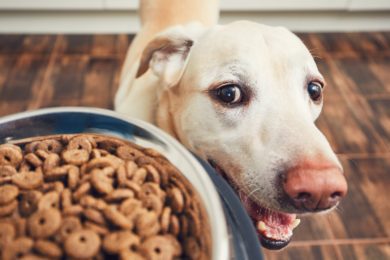As responsible pet owners, we’d do anything to protect our dogs. While we try our best, there are some things you can’t protect them from, such as their irrational fear of the harmless vacuum or the ensuing feeling of panic that comes along with the doorbell ringing (so scary!). On the other hand, we can protect our pets against some things, including one of the deadliest viruses a dog can contract: Canine Parvovirus.
What Is Parvo?
Canine Parvovirus (commonly referred to as parvo or CPV) is a highly contagious virus that mainly affects puppies but is also known to impact unvaccinated adult dogs. This virus is highly contagious, difficult to kill, and can live up to a year in an outdoor environment. It can be fatal without preventive measures or treatment.
The virus mainly attacks a dog’s gastrointestinal tract and bone marrow and is known to cause heart damage in younger puppies. The incubation period for the virus in an infected dog is usually around 3-7 days. During this time, the virus begins attacking the body’s rapidly dividing cells, mainly affecting the bone marrow and the intestinal tract. By doing this, the virus multiplies and infects other parts of the dog’s body, eventually finding its way into the bloodstream.
Transmission
The primary source of parvo transmission comes from dogs ingesting contaminated feces. The virus begins spreading in the feces of an infected dog around 4-5 days after the initial exposure – this process is known as“viral shedding,” and it happens when particles release or shed from a single cell, travelling from the host to the environment.
A dog may also contract parvo from objects, clothing, fur and paws that have become contaminated with the virus – and yes, this could even include the plain old ground we walk on. Given the proper environment, the parvovirus can survive for months and is resistant to most disinfectants. The virus’ environmental resistance makes it difficult to trace and even easier to spread.
Since the virus is highly contagious and hard to kill, it only takes one infected dog to cause an outbreak, a scary reality many shelters must face. High numbers of animals, close contact and shared quarters mean parvo could have a devastating effect on shelters with unvaccinated or young dogs.
Symptoms
Dogs who have contracted the disease usually begin showing symptoms within 3 to 7 days, which may include:
- Vomiting
- Bloody diarrhea
- Lethargy
- Loss of appetite
- Fever
- Dehydration
- Weakness
- Weight loss
If you suspect your dog has parvo, inform your vet’s office before their appointment so they may follow proper quarantine processes.
Diagnosis and Treatment
The most common way for a vet to diagnose parvo is through blood work or by performing a fecal swab, such as an ELISA test (enzyme-linked immunosorbent assay).
Since there is no known cure for parvovirus, treatment primarily focuses on providing supportive care to ensure the dog can fight the virus while receiving proper nutrition. This care may include IVs, feeding tubes, and/or antibiotics to treat any secondary infections and hospitalization.
The timeline for recovery is dependent on the infection’s severity. According to the American Kennel Club (AKC), the survival rate of infected dogs treated by a veterinarian is between 68-92%. Dogs may continue to spread the virus via their feces for up to 2 weeks after recovery, so it’s important to remain diligent in your pick-up duties to help stop the spread.
Prevention
Though there is no treatment to eliminate the virus once a dog is infected, parvo is preventable. The first step in preventing parvo is ensuring your dog receives their vaccinations.
Puppies and unvaccinated adult dogs are most susceptible and vulnerable to the virus, that is until they have received their full series of parvo vaccinations. It is suggested that puppies are vaccinated against parvo between 6-12 weeks of age.
For unvaccinated dogs, dog parks are potential breeding grounds for the virus and are best avoided until a puppy or dog is fully vaccinated. Until this time, they should only socialize with vaccinated dogs. Socialization is important for our pups in those early days, so rest assured that you can safely socialize your dog in places that require proof of vaccination, such as doggy daycare or boarding facilities.
Understanding what parvo is, how it spreads and what to look out for are important details for any dog owner to know. Protecting your pet against parvo really boils down to prevention, early diagnosis and treatment.
If your puppy or unvaccinated dog shows any symptoms of parvo or other signs of illness, contact your vet immediately.


